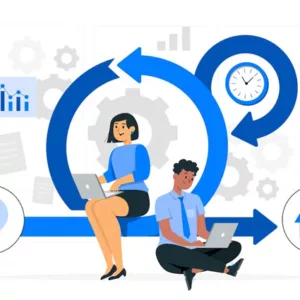Not just large multinational corporations but also small growing businesses are harnessing the power of digital marketing. Businesses that have adopted digital transformation amidst the pandemic are keeping their foot on the accelerator pedal. Top business owners are already significantly ahead of their peers by leveraging specific digital capabilities. It’s about time local businesses also implement digital marketing to their advantage.
For local and small businesses, digital marketing is no longer about merely adding online channels to the media mix; it is about integrating customer insights, demands, and trends into all facets of marketing.
Most local business owners tend to think that attracting local audiences is by holding large placards in the middle of the street. Regardless of what business owners think, audiences are unlocking the value of the Internet and Google surfing. And the pandemic has simply reinforced the need for purchasing online through contactless payments. Audiences have adapted to this new norm. The products are more accessible, less expensive, and delivered to their doorstep. Therefore, this is the perfect time for small local businesses to go online.
In recent years, voice search has exploded in popularity. In fact, by 2022, 60% of all searches will be voice searches. This trend is largely being driven by the growth of smart speakers like the Amazon Echo and Google Home. If you want to take advantage of this trend, you need to optimize your content for voice search. This includes using long-tail keywords and natural language phrases.
Digital Marketing Trends for Local Marketing and Small Business Owners
1. Growing Social Media
Social Media blew up in the year 2021 like never before. There were a lot of new social media platforms that gained huge followers. They grew more with the implications of travel bans and restrictions. People started spending more time on social media during the lockdown period. Several local businesses such as restaurants, fashion boutiques, and even barber shops took advantage of the growing social media trends. Some unique skills started to go viral and have amassed millions of views online. This skyrocketed the local businesses’ publicity.
Social media proved that it has the potential to make or break a business and could help boost revenues overnight. Also, it does not matter even if you don’t have viral content to influence the local community. All the major social media platforms offer paid to target to help your business. With these tailored social media ads you can offer your target audiences to visit your business and improve conversions.
2. Adjusting SEO
Search engine optimization is not something new for digital marketing experts. But the different ways to search on Google are what keep changing. Local SEO has historically helped small businesses in the area drive more traffic. However, local SEO trends have rapidly expanded over the years.
Most of you might have noticed that Google is making information available right on the SERPs themselves. Such unique featured snippets and zero-click searches are becoming more common every day. Therefore, local businesses must ensure to include long-term keywords in their content. These keywords must be similar to the queries that people search. You may get these queries from Google Analytics or Google Search Console. Another growing trend is voice search. This will require the inclusion of keywords and content that appear similar to spoken phrases rather than typed shorthand.
3. Page Experience and Core Web Vitals
Google announced a new update for the website page experience in June 2021. According to this recent major update, in order to rank websites, Google will consider several page experience signals.
Largest Contentful Paint (LCP)
This measures the speed or time taken for a web page’s main content to be loaded. The content can be the largest section on the website and it needs to load in under 2.5 seconds to meet the new update.
First Input Delay (FID)
It measures the amount of time needed for a website visitor to be able to interact with a page. According to the new update, this needs to occur within 100 milliseconds.
Cumulative Layout Shift (CLS)
An unexpected change in inner page content or elements normally occurs because resources are loaded asynchronously or DOM elements. Therefore, websites must ensure that visual stability is properly maintained. This is because it helps quantify how frequently users experience unexpected layout variations—a low CLS helps ensure that the page is delightful.
By meeting the Core Web Vitals updates, local businesses can significantly improve their page score.
4. Google My Business
The Google My Business platform is one of the most used solutions to transform the way local audiences are. Since Google Business Profiles are so robust, audiences will not have to click on the website link but rather gain relevant information from the SERP itself. GMB has several integrations that provide updated information to local audiences.
Conclusion
Essentially the whole world is now accessible at our fingertips. But for some businesses and customers, the whole world is not relevant. Therefore the digital marketing strategies to rank internationally are not similar to the strategies required to rank locally. Only the businesses that sort this out and make the best out of local marketing and web design in Toronto can stand out.





